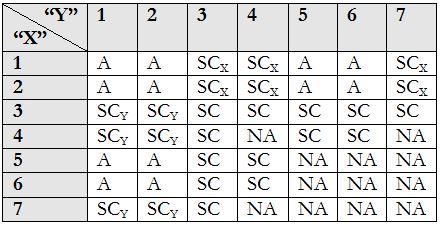On May 7, 2015, the Commodity Futures Trading Commission (“CFTC”) published in the Federal Register a proposed rule (the “Proposed Rule”) that would reduce the reporting and recordkeeping burdens of end-users engaging in commodity trade options.[1]
Under the Commodity Exchange Act, as amended by Title VII of the Dodd-Frank Wall Street Reform and Consumer Protection Act of 2010 (“CEA”), the definition of “swap” includes commodity options.[2] However, the CFTC issued an interim final rule in April 2012 exempting qualifying commodity options (“trade options”) from most swap regulations, subject to certain specified conditions (the “Trade Option Exemption”).[3] For a commodity option to qualify for the Trade Option Exemption, the commodity option must involve a nonfinancial commodity (i.e., either an exempt commodity, such as energy and metals, or an agricultural commodity) and the parties to the option must satisfy the following three-part test: (i) the offeror of the option is either an “eligible contract participant” (generally, a non-financial entity entering into a swap for purposes of hedging or mitigating commercial risk) or a commercial participant (a producer, processor, commercial user of, or merchant handling, the underlying physical commodity that is entering into the option solely related to its business as such); (ii) the offeree of the option is a commercial participant; and (iii) the parties intend to physically settle the option so that, if exercised, the option would result in the sale of a nonfinancial commodity for immediate (i.e., spot) or deferred (i.e., forward) shipment or delivery.
A commodity option that meets the foregoing test nevertheless may remain subject to certain regulatory requirements under the CEA, including: reporting and recordkeeping; large trader reporting; position limits; certain recordkeeping, reporting, and risk management duties applicable to swap dealers (“SDs”) and major swap participants (“MSPs”); capital and margin for SDs and MSPs; and any applicable antifraud and anti-manipulation provisions.
Under the Trade Option Exemption, trade options must be reported to a registered swap data repository if either: (i) one of the counterparties is registered as an SD or MSP; or (ii) both parties to the trade option are end-users but at least one of the parties has been required to report non-trade option swaps during the 12 months prior to the trade option being entered into. If neither end-user party has had to report non-trade options during this 12-month period, then each end-user must: (i) file by March 1 a Form TO reporting each trade option entered into in the previous calendar year; and (ii) notify the CFTC, through an email to TOreportingrelief@cftc.gov, no later than 30 days after entering into trade options having an aggregate notional value in excess of $1 billion during any calendar year. Under CFTC No-Action Letter No. 13-08 (“No-Action Letter 13-08”), however, even an end-user that has had to report non-trade options during the 12 months prior to the trade option being entered into generally need not comply with the reporting requirements, provided that such end-user complies with the foregoing items (i) and (ii).[4]
The Trade Option Exemption also requires an end-user to keep basic business records (i.e., “full, complete and systematic records, together with all pertinent data and memoranda, with respect to each swap in which they are a counterparty”[5]) and potentially requires counterparties to create and maintain “unique swap identifiers” and “unique product identifiers” for each swap and to record the “legal entity identifier” of each counterparty.[6] However, No-Action Letter 13-08 generally clarified that an end-user need not create and maintain “unique swap identifiers” and “unique product identifiers” for each swap and record the “legal entity identifier” of each counterparty, provided that: (i) if the end-user’s counterparty is an SD or MSP, the end-user obtains and provides to its counterparty a legal entity identifier; and (ii) the end-user notifies the CFTC, through an email to TOreportingrelief@cftc.gov, no later than 30 days after entering into trade options having an aggregate notional value in excess of $1 billion during any calendar year.
The Proposed Rule would relax reporting and recordkeeping obligations under the Trade Option Exemption and No-Action Letter 13-08 by no longer requiring end-users to file a Form TO in connection with otherwise unreported trade options.[7] End-users would continue to be required to notify the CFTC no later than 30 days after entering into trade options having an aggregate notional value in excess of $1 billion during any calendar year, but could reduce their monitoring burden by providing an “alternative notice” that they reasonably expect to exceed this $1 billion threshold.[8] End-users would continue to be subject to basic recordkeeping requirements and be required to obtain and provide to a counterparty a legal entity identifier if that counterparty is an SD or MSP.[9] However, under the Proposed Rule, end-users would not be required to identify their trade options in all recordkeeping by means of either a unique swap identifier or unique product identifier.[10]
[1] Trade Options, 80 Fed. Reg. 26,200 (May 7, 2015).
[2] See CEA Section 1a(47)(A)(i) (defining “swap” to include “[an] option of any kind that is for the purchase or sale, or based on the value, of 1 or more . . . commodities . . . .”
[3] Commodity Options, 77 Fed. Reg. 25,320 (April 27, 2012).
[4] CFTC No-Action Letter No 13-08 (April 5, 2013) (available at: http://www.cftc.gov/ucm/groups/public/@lrlettergeneral/documents/letter/13-08.pdf).
[5] 17 CFR § 45.2(a).
[6] See id. at 3-4.
[7] Proposed Rule at 26,203.
[8] Id. at 26,203-04.
[9] Id. at 26,204.
[10] Id.


